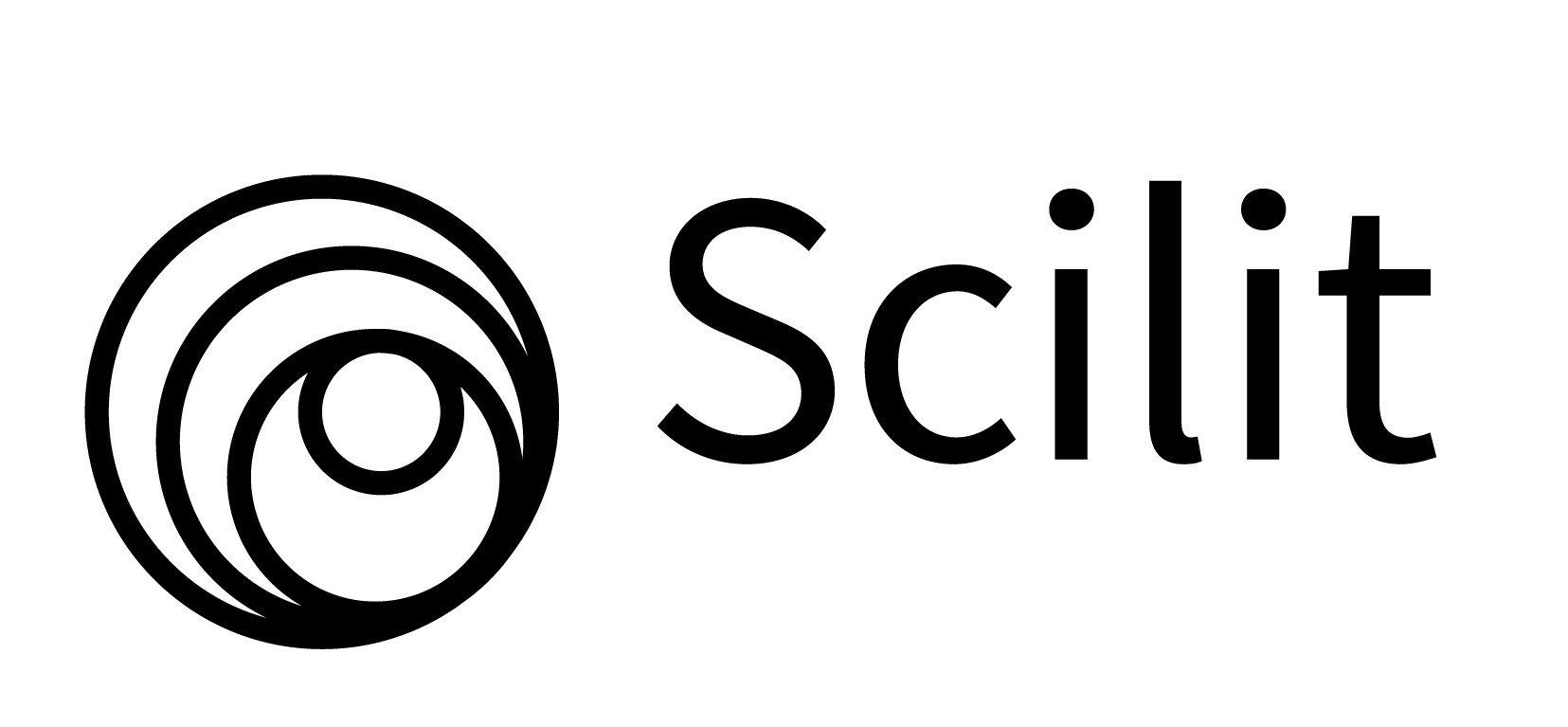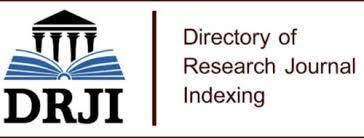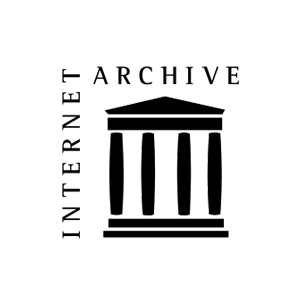Review Article
MIDDLE AGES: FORMATION OF EUROPEAN CIVILIZATION
- Dr. M.Sh. Fayzulloeva
Corresponding author: Dr. M.Sh. Fayzulloeva
Volume: 1
Issue: 4
Article Information
Article Type : Review Article
Citation : M.Sh. Fayzulloeva, Middle Ages: Formation of European Civilization. Journal of Medicine Care and Health Review 1(4). https://doi.org/10.61615/JMCHR/2024/OCT027141028
Copyright: © 2024 M.Sh. Fayzulloeva. This is an open-access article distributed under the terms of the Creative Commons Attribution License, which permits unrestricted use, distribution, and reproduction in any medium, provided the original author and source are credited.
DOI: https://doi.org/10.61615/JMCHR/2024/OCT027141028
Publication History
Received Date
08 Oct ,2024
Accepted Date
21 Oct ,2024
Published Date
28 Oct ,2024
Abstract
The article deals with the middle civilization of Europe. Including important socio-political processes, and economic, social, and cultural development of a number of European countries during the Middle Ages and the Renaissance, which played a special role in the further development of culture and civilization of the world.
Keywords: Europe, Feudal Society, states, towns, production, people, culture, innovation.
►MIDDLE AGES: FORMATION OF EUROPEAN CIVILIZATION
M.Sh. Fayzulloeva1*
1Assistant Professor, Tajikistan State University, Republic of Tajikistan.
Introduction
The era of the Middle Ages lasted 1200 years (from the end V cent. till half of XVII cent.), during which a feudal system developed in Europe. The term "Middle Ages" was first used by Italian humanists in the 15th century to determine the period between classical antiquity and their time.
The epoch of the Middle Ages is important for Western European civilization; in this era, Christian religion spiritually united the people of Europe; the church became the supporter of royal power, formed a new direction of Protestantism in Christianity; was taking shape of urban culture; were formed the first parliaments and the principle of separation of power; there was an industrial revolution and a transition to an industrial society. Medieval society can be divided into three stages:
- early Middle Ages (V-X centuries) the process of forming the structures of feudal society.
- the classical Middle Ages (XI-XV centuries) the time of maximum development of medieval feudal institutions.
- late Middle Ages (XV-XVII centuries) beginning to form a new capitalist society.
The medieval society of Western Europe was agrarian. Labor in agriculture, as well as in other branches of production, was physical. The main part of the population of Western Europe lived outside the towns. If towns were very important in ancient Europe, then in medieval Europe, especially in the first seven centuries, the role of towns was insignificant. Industry during this period existed in the form of handicrafts and manufacturing.
The era of the Middle Ages is characterized by a strong character of the church and a high degree of idealization of society. In the ancient world, every people had their own religion, but in medieval Europe, there was one religion - Christianity for all people. But in the Middle Ages, the Inquisition (merciless religious) was a barrier to the development of science.
The Middle Ages is the time of the formation of national states in the form of absolute monarchies. Populations consisted of three classes: aristocrats, clergy, and the worker people (small farmers, craftsmen, and traders).
Vassal System
The head of the feudal state was king. The king could be a vassal of another king or the pope. On the second step of the feudal system were the vassals of the king - large feudal lords (dukes, graph, bishops, abbats).
Morals and Customs
Medieval society was often cruel. The usual thing was the killing. Criminals were killed or forgiven completely. The idea that criminals can be re-educated was not allowed. Executions have always been organized as a spectacle for the public, and for awful (terrible) crimes, were invented painful punishments. For many ordinary people, executions served as enjoyment. Other manners of a medieval community of Western Europe were temper, greed, and vindictiveness. Sobbing (noisy crying) was considered honorable and beautiful action, and elevating everyone - both children and adults and men and women.
Early Middle Ages (V - X Centuries)
In the 4th century BC on the land of the Germanic tribes was the primitive society. During one century (4-5), Germanic tribes attacked and settled in the Western Roman Empire: Vest Goths in Spain; Vandals in North Africa; Oust Goths in Italy; Franks in Gaul; Anglo-Saxons in Britain. Most of the oppressed people of the Roman Empire welcomed the Germans as their savior. But the ancient and beautiful town of Rome was destroyed by the Germans. After the German conquest, slavery form was destroyed in the Western Roman Empire.
After the collapse of the Western Roman Empire (476), Gaul (northern Italy) was declared an independent province. But in 486 the Germanic tribes of the Franks, led by Clovis, conquered Gaul and defeated the army of the Roman emperor. In Gaul, the Frankish aristocracy became large landowners. Clovis became king of the Franks and inherited his power. He ruled with the help of a military force. Clovis appointed governors to each province, which was called a "graph". Clovis published laws that protected the interests of the upper classes. After the conquest of Gaul, the Franks accepted Christianity. Because Clovis and the nobility understood that the Christian religion called for honest work and patience, and that was to the king's benefit (advantage). Therefore, Clovis and the aristocracy accepted and converted to Christianity, forcing all the Franks to follow it. The Christian Church also supported Clovis. He gave gifts to the church. The head of the regional church was called "father”. The European Church was headed by the Pope.
The Germans lived with their families in the villages of the Roman Empire. Germans learned from the Romans - farming, gardening, animal breeding, and so on. Each family had their own land and the harvest belonged to them, but the land did not belong fully to the family. The land belonged fully to German leaders and aristocracy. In the Frankish state, there were large landowners - feudal lords. Peasants, who could not return their debts to the feudal lords in time, became vassals (subordinates). So, in the 6th-9th centuries in the Frankish state, there were two classes - feudal lords and serfs (workers). After the Germans settled in Rome, they moved from a primitive society to a slave society, and there was private property and inequality between them.
The Empire of Carly Great
The Frankish state was ruled by Carly Great in 768 - 814 years. He was a skilled and brave warrior. He invaded neighboring countries 50 times: he fought with Arabs in Spain, subjugated the Saxon tribes living on the banks of the Rhine and Elbe, and introduced Christianity. As a result of the successful conquests the leader of the Franks, Charles the Great, was created the Frankish state in the 800 years. Charles conquered Rome and proclaimed himself emperor. The Frankish state was territorially equal to the former Roman Empire. After Carly the Great's death, his three grandchildren signed an agreement in Verdun, which divided the territory of the Frankish state into three large states -France, Germany, and Italy. In the 9th and 10th centuries, the feudal system was restored in Western Europe, where all lands and power were in the hands of feudal lords, which exploited the peasants. Peasants worked on feudal land and paid tax. The feudal farms were livelihood farms; all the necessities of life were produced within them. But by the 11th century, the tools of labor and commerce had developed very slowly.
The feudal lords lived in castles, and the cavalryman was called a "knight" who dressed in iron clothes and fought. Only feudal lords could be knights. Each knight had his own coat of arms and slogan. The knights held military competitions among themselves, which they called "tournaments". In the 9th and 11th centuries, titles or ranks of kings, dukes, counts, barons, and knights appeared.
Classical Middle Ages (XI-XV Centuries)
In the classical medieval, the process of formation of feudal relations is completed, and feudal society reaches its highest flourishing. By the X-XI centuries, Western Europe was in feudal non-unity or fragmentation. The most important factor in the creation of a united Europe was Christianity, which spread in all European countries and became the state religion. Christianity determined the cultural life of early medieval Europe, influencing the quality of education and upbringing. Religion writers compiled religious books on parchment papers. Clergymen with their eloquence, and oratory, greatly influenced public moods.
The luxurious churches of San Chappelle in Paris (XV century) and Saint Peter's in Rome (XVI century) were built. The buildings of the cathedral were square and oval, they were decorated with monuments, illustrations, and colored geometric ornaments. The Byzantine Empire became the continuation of ancient culture. In the Middle Ages, temples, royal palaces, towns with walls, and minarets were built.
During this period, the level of economic development was the highest in Italy. The towns of Venice, Genoa, Florence, Milan, were centers of crafts and trade.
At this time, nation-states - England, France, Germany and others begin to form and become centralized states. Almost all countries of Western Europe during this period went through bloody wars. An example is the War of the Scarlet and White Roses in England in the 15th century. As a result of this war, England lost much population.
The classical Middle Ages is also a time of peasant uprisings and unrest. An example is the revolt led by Wat Tyler and John Ball in England in 1381. The uprising began as a mass protest of peasants against the tax. But the uprising was brutally suppressed. However, in the following century, in the 15th century, many uprisings received their answers. For example, almost all the peasants really became personally free and their taxes were no longer as heavy as before.
Economy and Agriculture
The main branch of the economy of Western European countries during the classical Middle Ages, as before, was agriculture. The sowing lands were expanding, and developing production oil-making and wine-making. The rights of peasants to land were strengthened. They could freely inherit land, donate, and sell it. The land market has become wider.
Medieval Towns
The most important characteristic of this period was the growth of towns. In the classical Middle Ages, old towns quickly grew, and new towns arose near castles, fortresses, monasteries, and bridges. Middle towns had 4-6 thousand population. There were very large towns, such as Paris, Milan, and Florence, where 80 thousand people. Towns arose on the lands of the king or large feudal lords and they brought income in the form of taxes from crafts and trade. The richest towns were London and Paris. In the 13th century, there were 200 towns in England. However, life in medieval towns was difficult and dangerous. For example, the epidemic "black death" of the XIII century take away many people.
Medieval Craft
Crafts were an important part of the urban population. From the VII-XIII centuries were growing urban crafts. The craft becomes a respected occupation that brings a good income. In the XII century in Europe, were made mechanical watches, in the XIII century a large tower clock, in the XV century a pocket watch. Craftsmen united in workshops. There were hundreds of different workshops in towns. For example, in Paris, there were more than 350 workshops.
At the end of the classical Middle Ages, appeared a new form of industrial production organization - manufactory. Manufacturing significantly increased the productivity of labor, which, as before, remained physical. Hired workers worked at the manufactories of Western Europe.
Trade and Traders
Important classes of the urban population were traders, who played a major role in domestic and foreign trade. They constantly traveled around the towns with products. Traders, as a rule, were literate and could speak the languages of the countries through which they traveled. Foreign trade during this period was more developed than domestic. The centers of foreign trade in Western Europe were the North, Baltic, and Mediterranean Seas. From Western Europe exported wine, metal products, honey, building materials, and fur. From East to West, luxury products, such as colored fabrics, silk, precious stones, elephant bone, fruits, spices, and carpets, were transported. Despite the existence of dangers on the roads, medieval society was very active and mobile: there was an intensive demographic exchange between regions and countries, which contributed to the formation of a united Europe.
Medieval Universities
The first universities in Western Europe appeared in the classical Middle Ages. At the end of the XII - beginning of the XIII centuries universities were opened in Paris, Oxford, Cambridge, and other European towns. In the XIV-XV centuries at the University of Paris, a number of students was more than 30 thousand. In the XV century, more than 60 universities were acted in Europe. The head of university was called the “rector” and the head of the faculty was called “dean”.
In the XI century, science-scholasticism was studied in universities. The most important feature of its subject was limitless faith in the power of the mind in the process of knowing the world.
Universities were a place for the exchange of culture between countries, and achievements immediately became known in European countries. For example, the "Decameron" of Italian writer Jovanni Boccaccio (1313-1375) was quickly translated into all the languages of Europe, it was read and known everywhere.
The formation of Western European culture contributed to typography (1453). Johannes Gutenberg (1398-1468), who lived in Germany, is considered the first printer. He invented the printing machine or press.
Features of the Historical Development of the Leading Countries of Europe
In the XIV-XV centuries, Italy was the most educated and prosperous country in Europe. In the XIV-XV centuries, France already had state taxes, a single monetary system, and a postal service. England has been the most successful in the sphere of human rights and the protection of the individual. The king of England had no right without the consent of parliament to distribute new taxes and publish new laws.
Late Middle Ages (XVI - early XVII Centuries)
Great Geographical Discoveries
In the XV - early XVII centuries the economies of European countries are growing even more and capitalist relations are actively developing. It was connected with the Great geographical discoveries. Their reason was the search by Europeans for new seaways to China and India. Great geographical discoveries became possible thanks to the success of shipbuilding. So, the Europeans learned to build caravels - high-speed ships capable of swimming against the wind. Geographical knowledge, in the field of cartography, was also important. Sailors were looking for a way to the eastern countries.
Portuguese sailors in 1487 year discovered the peninsula of Good Hope - the southernmost point of the African continent. At the same time, the Italian Christopher Columbus (1451-1506) was also looking for a way to India, with four expeditions. In October 1492, the New continent was discovered by Columbus, later called America by the name of Amerigo Vespucci (1454-1512).
The seaway to India was first discovered by the Portuguese expedition led by Vasco da Gama (1469-1524) in 1498.
The first trip around the world was made in 1519-1521, led by the Portuguese Ferdinand Magellan (1480-1521) and he determined that the Earth is round. Of 256 people on Magellan's team, only 18 survived, and Magellan himself died in a fight with the local natives. Many expeditions of that time ended so sadly.
By the middle of the XVII century, Europeans discovered Australia and New Zealand. As a result of the Great geographical discoveries, colonial empires began to take shape, and from the newly discovered lands to Europe, were sent treasures, gold, and silver. In the second half of the XVI-XVII centuries colonial conquests began by the British, Dutch, and French.
Trade
Another important consequence of the Great geographical discoveries was the connection of world trade directions. Trade was the most important source for the formation of large private capital. Thanks to the development of trade at this time, there is a stronger connection between parts of the planet. For the first time in history, the foundations of the world market are beginning to take shape. In this epoch improved technology and technology of the metallurgy industry. A new class - capitalists were emerging.
Politics
In the field of politics of the XV-XVII centuries also brought a lot of new phenomenon. State structures are noticeably strengthened. The foundations of new political ideas in Europe were determined by the Italian Niccolò Machiavelli (1469-1527). He was a secretary in the Florentine Republic, and the author of the book “The Prince”. Machiavelli believed that every nation has its own destiny, which cannot be avoided or changed.
Reformation of the Church
The ideas of the Renaissance and the Reformation had a strong influence on Europeans. In this direction, the Netherlands and England were in the lead, which supported the opinion about the originality (or uniqueness) of each person, and the value of human life, freedom, and dignity. In the middle of the XVI century, the Reformation movements break the unity of Catholic Europe. Protestant ideas spread in many countries. The Pope has lost his global power in the ideological sphere.
The Renaissance (XIV-XVI cent.) became a new era in the development of world culture. In this era, all branches of science were improved and humans became its center. The main reason for the Renaissance progression was the establishment of new industrial relations. The center of the Renaissance became Italy. Several great thinkers lived in Italy at that time.
Development of Science
European science was also developing, which greatly influenced not only European civilization but also all of humanity. In the XVI-XVII centuries, natural sciences like botany, zoology, biology, and medicine were developing. During the Renaissance, natural sciences and materialistic philosophy also developed. During the Renaissance, the created the best watches, invented the microscope, telescope, thermometer, barometer, hydrometer, compass, gunpowder, and printing machine, and began to produce paper. Mathematics was developing fast and invented in 1614 the first tables of logarithms. Architecture, sculpture, art, and theater were also developed.
Astronomy: Ptolemy’s wrong teaching (1st century BC) about the movement of a star and a planet around the Earth (the church supported this teaching) was proved.
Medicine: Doctors determined blood circulation in the human body, causes of appearance, and medication for infectious sickness.
Religion: The holy book "Bible" has been translated from Latin into English, French, and Germanic languages.
Leonardo da Vinci (1452-1519) is an Italian great artist sculptor, architect, engineer, botanist, mathematician, musician, and writer. He tried to make better human labor, and employment with the help of science. He made technical projects and painted many pictures. One of them is the “Mona Lisa” - a picture of an urban woman and it is known all over the world.
Evangelista Torricelli (1608-1647) an Italian scientist, studied atmospheric pressure and created a barometer.
Blaise Pascal (1623-1662) a French scientist discovered the law of pressure transmission in liquids and gases.
Galileo Galilei (1564-1642), a famous Italian physicist and astronomer; made a major contribution to the development of physics, first created a telescope, which shows things 30 times increased. Galileo through a telescope watched the stars and for the first time in the history of mankind saw a huge number of stars, mountains on the surface of the moon, and spots on the sun. The Inquisition banned writing articles and spreading his thoughts to Galileo, but he did not change his scientific opinion.
Nicolaus Copernicus (1473-1543) was a Polish scientist, and author of the famous work "On the circulation of the space spheres", in which he scientifically proved that the Earth is not an immobile center of the world. Earth and other planets move around the Sun. Copernican invention was a big revolution in science and hit the church hard.
The views of Copernicus were developed by the German astronomer Johannes Kepler (1571-1630), who formulated the laws of planetary motion.
Giordano Bruno (1548-1600) is an orator, thinker, hero of science, and talented Italian writer. He continued the astronomical teachings of Copernicus and confirmed that the Cosmos is endless, the Earth or the Sun is not the center of the Cosmos. There are stars in the Cosmos that are larger than the Sun and there are planets around them. Bruno has traveled to Europe for 16 years. After returning to Italy, the Inquisition tried and kept him in prison for 7 years. Then they set him on fire alive. Now in Rome, in the place where the thinker was killed, there is a monument for him.
By the end of the late Middle Ages, groups of scientists were created in Europe, there collectively, and jointly discussing experiments, methods, tasks, and results. On the basis of scientific groups in the middle of the XVII century national academies of sciences were formed the first of them arose in England and France.
During the Renaissance, literature, art, theater, architecture, and sculpture also developed.
Michelangelo (XV-XVI) is an Italian sculptor, artist, architect, poet, and military engineer. He created a sculpture of a boy - "David" in the center of the city of Florence, Italy.
Rafael (XV-XVI) is an Italian famous artist. He painted pictures in which he reflected the inner world of humanity. One of them is the Sistine Madonna (Сикстинская Мадонна).
The works of these painters amaze art fans with their beauty till now. In this era, there lived a number of humanist writers who in their books criticized the feudal system and dreamed about a right, democratic society.
Thomas More (XV-XVI) is an English writer. He wrote the book “Utopia” (from the Latin word - “dream place”) and in it, he tells about the best social form.
Francois Rabelais (XV-XVI) is a French writer, teacher, doctor, and linguist. In his book "Gargantuan and Pantagruel" he criticizes the feudal system, people of high social position, lords, and their wars and conflicts. The church angered the writer, and he died in distress, but he did not change his opinion.
William Shakespeare (XVI-XVII) is a great English poet, actor, and founder of the London Globus Theater. Shakespeare has written over 37 tragedies, comedies, and dramas. In his works “Hamlet”, “Othello”, “King Lear”, and “Romeo and Juliet” he tells about tragic love, friendship, good nature, and others. Karl Marx called Shakespeare one of the great geniuses who was given to the world.
Miguel Cervantes (XVI-XVII) is a Spanish writer, and humanist who spent a hard life. He is the author of the novel “Don Quixote”. The writer in his book fought against anger and injustice.
Conclusion
Thus, in the late Middle Ages in Europe, inequality was manifested in the levels of economic and political development of countries. The Netherlands, England, and France are developing at a faster tempo. Spain, Portugal, Italy, and Germany are staying behind. However, the development of European countries was still common to all countries. ‘In the XI-XV centuries in Europe the process of formation of centralized states - England, France, Portugal, Spain, and Holland.’ Capitalist relations are emerging and established in Europe.
During the Renaissance, a new worldview was based on humanism. Now concretely a human was placed at the center of the world, and not the church. Humanists were against the traditional medieval ideology. In the late Middle Ages, the most important idea of the West took shape: an active relation to life, the wish to learn the world with the mind, and intellect and to transform the world in the interests of man. During this epoch, a feudal form weakens and capitalist relations come up in society. All the achievements of spiritual life are directed at improving human life. The humanism of the ancient world was reappearing and established in the XIV-XVI century. Therefore, this period of Europe was called the Renaissance, which started in Italy and spread throughout Europe. The medieval and Renaissance civilizations became the foundation for the further progress of European countries.
- World History. (2006). Cultures, States, and Societies to 1500. Produced and published by University of North Georgia. 478.
- World History. (2016). Great Civilizations. Hiebert, Fredrik T. /National Geographic Learning (Firm). 401.
- The World History. (2000). Textbook for high schools. ed. G.B. Polyak. -Moscow: UNITI. 496.
- Brief world history. (1996). 2 volumes. /ed. A.Z. Manfred. -Moscow: Nauka.
- History of the Middle Ages. -Moscow: Enlightenment, 1988.
Download Provisional PDF Here
PDF




p (1).png)




.png)




.png)
